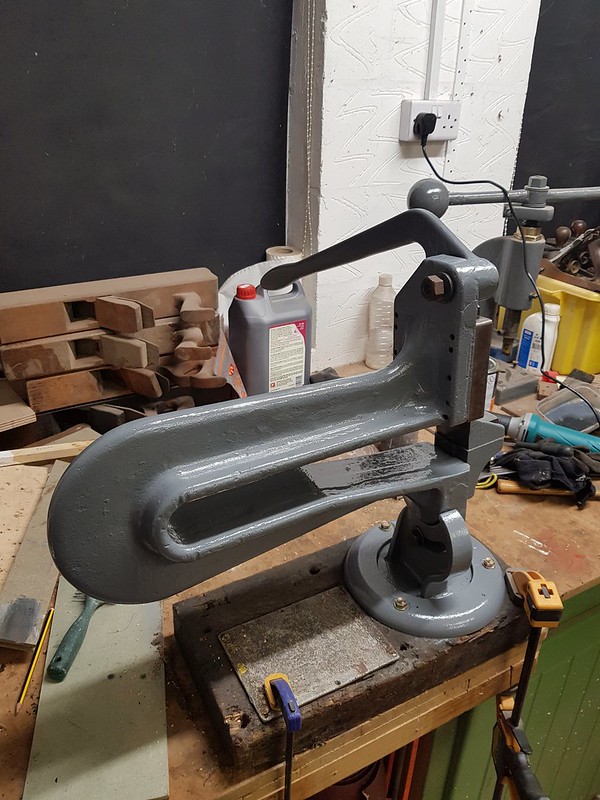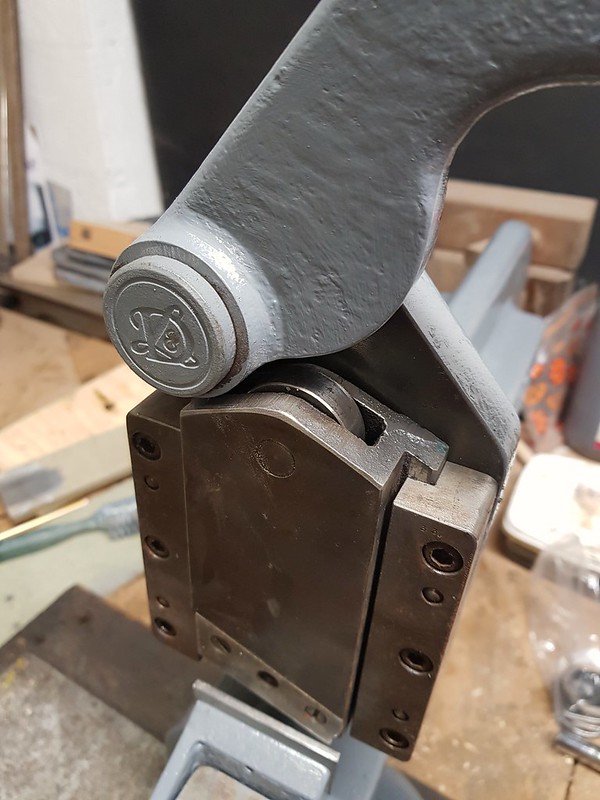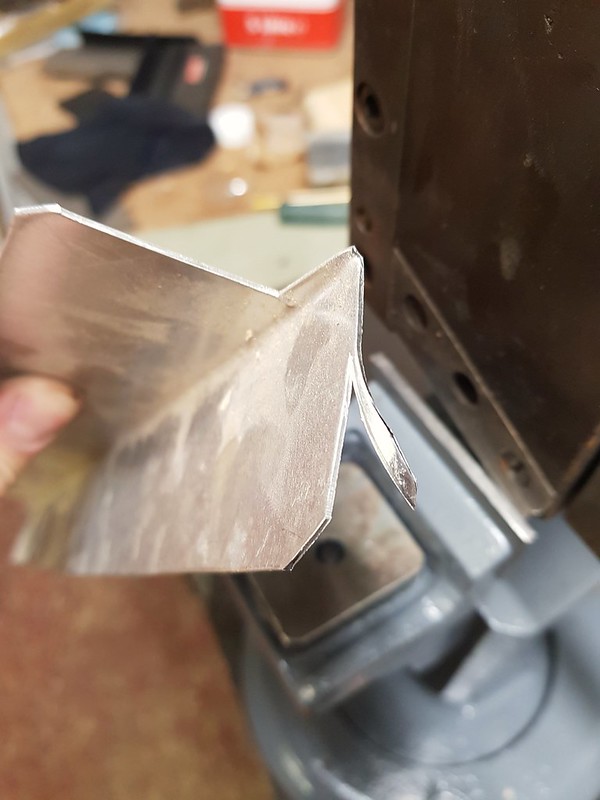This might be one for AndyT! Couple of weeks ago I bought this benchtop guillotine on ebay. Got the scale of it somewhat wrong and as I was working away asked Mrs French to pick it up for me - "its only small..." Luckily the fella was there to put it in her car for her! I think the previous owner was a plasterer as it had been trowelled over with a thick coat of metallic green hammerite - took some serious work with a grinder to get it off! I've asked on instagram and trawled google image search but I can't find any info on it.
Anyway, here it is all cleaned up:
 Bench guillotine 1
Bench guillotine 1
Its interesting as it swivels 360 on the base, and you can tilt it about 20 degrees off vertical as well.
 Bench guillotine 2
Bench guillotine 2
As you can see its cast iron and seriously heavy! No makers plate or casting anywhere - I can't even find holes where one has been rivetted on and removed. All it has is "D&L" or "L&D" on the pin the handle swivels on:
 Bench guillotine 5
Bench guillotine 5
All I've done is cleaned the blades - no sharpening yet, but it cuts 1mm aluminium very cleanly:
 Bench guillotine 4
Bench guillotine 4
Any info (or guesses!) at maker or original purpose would be welcome!
Anyway, here it is all cleaned up:
 Bench guillotine 1
Bench guillotine 1 Its interesting as it swivels 360 on the base, and you can tilt it about 20 degrees off vertical as well.
 Bench guillotine 2
Bench guillotine 2 As you can see its cast iron and seriously heavy! No makers plate or casting anywhere - I can't even find holes where one has been rivetted on and removed. All it has is "D&L" or "L&D" on the pin the handle swivels on:
 Bench guillotine 5
Bench guillotine 5 All I've done is cleaned the blades - no sharpening yet, but it cuts 1mm aluminium very cleanly:
 Bench guillotine 4
Bench guillotine 4 Any info (or guesses!) at maker or original purpose would be welcome!




































